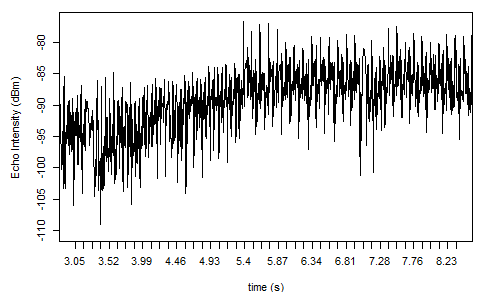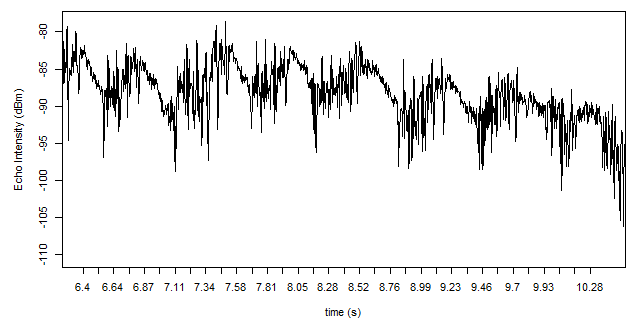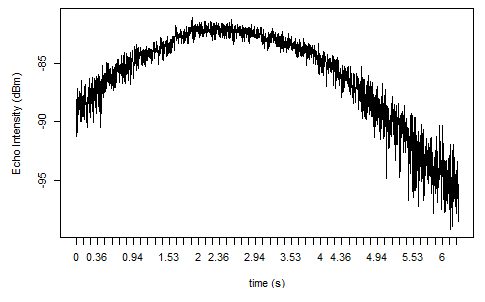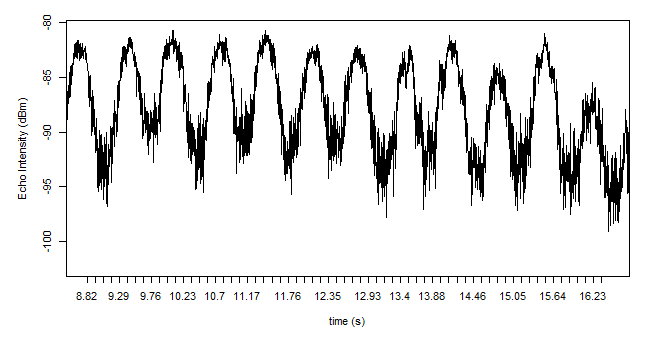BirdScan radar systems emit hundreds of pulses per second. A flying target is illuminated several hundred times. The resulting echo is a short signal which contains information of fluctuations in a target’s reflectivity. For birds and bats the wing-flapping pattern can be reconstructed from the signal. This information is exploited by SBRS Analytics Modules to classify targets (e.g. bird, passerine-bird, wader-bird, insect, ground-clutter) and to estimate the wing-flapping freq
Examples of echos recorded by BirdScan radar system
Echo from a continuously flapping bird. The wing-flapping produces a regular fluctuation in the echo. The wing-flapping frequency is estimated by the analytics module and used for automated classification into bird sub-groups.

Echo from a bird with flapping phases and pauses (probably a passerine). In addition to the wing-flapping frequency, the analytics module also extracts information on the phase/pause pattern, which is important for the automated recognition of birds with a “passerine-type” flight mode.

Echo from an insect. The inverse U shape is typical for echos from aerial fauna but visually more prominent for insects passing in the beam, due to the weak short-term fluctuation of insect echos. The “short-term fluctuation” is formally quantified by the analytics module and used for automated classification.

The MR1 system can optionally emit a circularly polarized radar pulse. For targets with a long body shape (insects) this produces a modulation in the echo, which is used by the analytics module to identify certain insects.

Are you looking for a radar solution?
Tell us about your project. We are looking forward to hearing from you.
